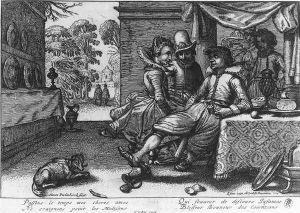Simon Poelenborch Paintings
Simon Poelenborch, also known as Symon Poelenburg or Cornelis van Poelenburch, was a Dutch landscape painter associated with the Utrecht Caravaggisti, a group of artists from Utrecht who were influenced by the work of the Italian master Caravaggio. Born around 1595 in Utrecht, Netherlands, Poelenborch was a leading figure in the development of the Italianate landscape painting during the Dutch Golden Age.
His early training is not well documented, but it is believed that he may have been a pupil of Abraham Bloemaert. Poelenborch traveled to Italy around 1617, where he spent several years, primarily in Rome. During his stay in Italy, he was profoundly influenced by the works of the Bolognese school and the pastoral landscapes of Annibale Carracci. He was also inspired by the campagna, the countryside surrounding Rome, and the ruins of the ancient city. Poelenborch became a member of the Bentvueghels, an association of mainly Dutch and Flemish artists working in Rome. It was customary for members of this group to adopt a nickname, and Poelenborch was known as 'Standard.'
After returning to Utrecht in the early 1620s, Poelenborch brought with him the Italianate style, characterized by small figures in expansive landscapes, classical ruins, and a warm, golden light. He became one of the principal exponents of this style in the Netherlands, influencing many other Dutch artists. His works often depict mythological or biblical scenes set in these idyllic landscapes. Poelenborch's paintings were appreciated for their refined elegance and the delicate rendering of his figures, which he often painted in a silvery tone.
Throughout his career, Poelenborch enjoyed considerable success and had an international clientele, including royalty and the aristocracy. He also influenced subsequent generations of Dutch Italianate painters, such as Jan Both and Jan Asselyn. Poelenborch died around 1667, leaving behind a body of work that continues to be admired for its poetic interpretation of landscape and its contribution to the Dutch Italianate tradition.
